Prioritize backlogs better with zipBoard
Book a personalized demo to learn how zipBoard can help you improve your workflow

Table of Contents
ToggleBacklog prioritization is a bucketing system that helps developers become more agile during their development sprints. Backlog prioritization helps developers understand which things need to be done immediately and what is the value of that in a quick, brief, and sometimes in a visual way.
The idea of prioritizing tasks based on their business value and priority stems from the concept of being agile in your workflow. Working in sprints, constantly getting feedback, reevaluating your present actions while responding to change. All of these principles are an integral part of the Agile Manifesto. In this article, we would dive a bit deeper into backlog prioritization. How can we benefit from it, how to do it on a higher abstraction level, what are the various methodologies and a brief breakdown of those, and what are the necessary tools to do so.
Let’s jump in!
There are quite a few benefits of organizing your tasks more efficiently based on the return and importance of the same. eLearning course development teams, eLearning agencies, L&D professionals, bulletins, and magazines classify backlog prioritization for the eLearning development process differently. But broadly, we can classify them into two chunks.
To some extent, most of the development teams know how to prioritize their tasks and whatnot. Although there are different metrics, factors, and parameters that govern their backlog prioritization for eLearning development.
Rather than focussing on simple factors like, “check if the task will give you financial returns” it is more ideal to approach it on a fundamental level. Sometimes the things which are not exactly highly prioritized will be next month but then it would be more critical than assumed. Below are some fundamental concepts that development teams can use to paint a picture for the long term.
Sometimes it is easy to observe things from a higher level of abstraction rather than looking at the immediate conditions.
For example, if you are building an eLearning course for a younger age group, it is wiser to invest in visuals rather than just create detailed documents.
How does your current developmental path improve the outcome? If you add more assessments, does it make the learners pay more attention? How does the end result vary if you add more videos instead of 1-on-1 sessions?
For example, if the eLearning course is about important data and privacy, the learners will pay more attention if there is a detailed case study.
External factors are the one which is decided by your clients and the outcome that they target. These external factors will help the eLearning course development team understand their user’s needs and restrictions better.
For example, for an eLearning course, it could be deadlines, cost cap, and expectation of higher employee motivation.
Internal factors are solely dependent on your team. These factors will help the team understand their own limits. Understanding these factors help the team grow faster by focusing on the pressure points.
For example, how many financial resources you have, how many developers you could afford, what are the tools that you use.
These aspects are very personalized as they depend on all of the internal and external factors. Ideally, everyone wants to hit the maximum on both but in reality, cutting corners is sometimes important for sustainability.
For example, if adopting a new authoring tool will give you huge ROI but at present, you don’t have enough clients to make that a reality, sit on that. Simultaneously, if you create a not-so-good draft of a course because you always deliver quicker, it will not have a desirable effect on your organization’s ratings.
How many courses does your team make in a specified time? Qualitative. How well do they achieve their desired goals? Qualitative. Ideally, all of the development teams want to amp up both. However, backlog prioritization helps in understanding what is important should be focused upon immediately. For instance, if your present customers/clients have given you the perfect ratings, it could be a good decision to think about expanding your production capacity.
There are a lot of backlog prioritization methodologies that are preferred by L&D professionals across the board. A lot of the developers and the senior management often wonder, which one is the best. First of all, is there a best? Maybe. The strategy that we, at zipBoard, would recommend to develop your own. The easiest and simplest way to develop your own custom backlog prioritization methodology is by understanding the ones already in practice.
Below we have compiled the most popular backlog prioritization methodologies which will help you understand their pros, cons, and the methodology itself.
It is one of the oldest models, if not the oldest backlog prioritization model. Stacked ranking is an internalized prioritization system. Here experts within the team rely on their experience and existing data to create a list that will help the team work faster. Sometimes the upper management and the stakeholders join the experts to make the list.
Pros:
Cons:
This qualitative aims at the highest level of customer satisfaction. The elements in the backlog are prioritized into five buckets: Must-have( non-negotiable from the customer’s perspective); Attractive(users are happy when this is present but not unhappy when it’s absent); One-dimensional(happy when present, unhappy when not); Indifferent(no effect on user satisfaction); Reverse(presence makes the users unhappy and absence makes them unhappy).
Pros:
Cons:
This model has its roots in Agile product development methodologies and is product-driven. This bucketing system classifies tasks on the basis of their impact on the product’s release. Must-have(product can’t be released without it); Should-have(it is desirable to have but will not affect the product’s release); Could-have(these features could be incorporated into the product but, still not mandatory for the release); Won’t-have(these features have a detrimental effect on the product’s release).
Pros:
Cons:
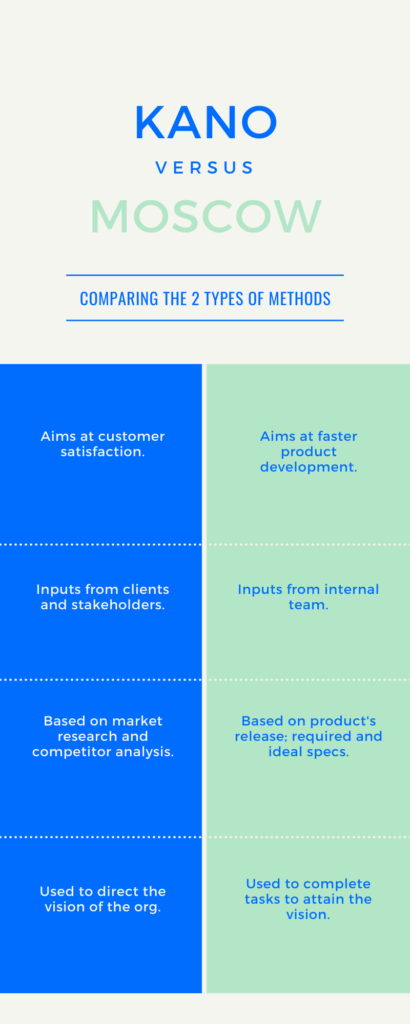
Donald Reinertsen, a lean leader, has emphasized the importance of quantification of “cost of delay” in backlog prioritization. The concept that drives this form of backlog prioritization is the amount of money lost if the product is not delivered on time and the spotlight is put on the features that are responsible for it. Below are a few ways in which this method of prioritization works.
Pros:
Cons:
Take an example of an eLearning course development team that is building a course for IT professionals about “information security”. Creating animated videos, which will help the learners understand the course faster will increase the cost of development by $10,000. However, the success rate and business value of course of that course would be higher, as compared to, say, simple infographic videos even though the latter would cost less. In a scenario like this, the calculated net present value is weighed against the expected return. This predictive financial analysis helps the eLearning developers create the backlog efficiently.
Pros:
Cons:
The idea described by Sean Ellis will require you to calculate the ICE score per idea:
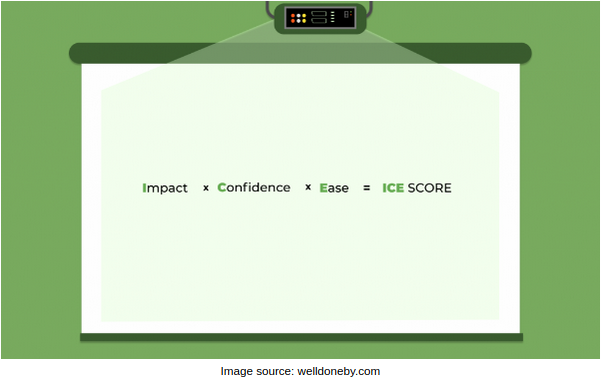
Pros:
Cons:
This method of backlog prioritization helps efficient teams to improve their matured products. It has a more systematic approach and an advanced scoring system.
RICE Score = (Reach*Impact*Confidence)/Effort
Pros:
Cons:
The story mapping backlog prioritization technique has two axes that help developers manage their backlogs easily. In the x-axis, the sequence of the tasks which are performed by the client and the y-axis determine the importance of the same. The importance of the tasks determined the stacking of the tasks under a particular activity.
Pros:
Cons:
This outcome-driven backlog prioritization methodology focuses on two important metrics: satisfaction and importance. Based on how satisfied the end-user is with a parameter of the current solution and how important that particular parameter is to the overall success of the same determines the prioritization.
Pros:
Cons:
Deciding which task is important in the developmental process to depend on the following factors:
All the above factors and many more dictate how the backlog prioritization process proceeds. Picking one off the shelf can definitely work in the short term, but of course, in the long term, an organization or a team needs to find its own formula. The concept of “one-size-fits-all” is a mirage.
The above listing will assist you with getting acclimated to the parameters to focus on. Also, different backlog prioritization methodologies are used in different conditions. Taking a closer look at each of the methodologies available will help in understanding which sets of parameters to focus on based on the stage you are in.
Understanding existing techniques of backlog prioritization will help you get familiar with everything that you have in your bag. Resources, products, customer base, and many more. Getting familiar with the matrices that are used for backlog prioritization is extremely useful too.
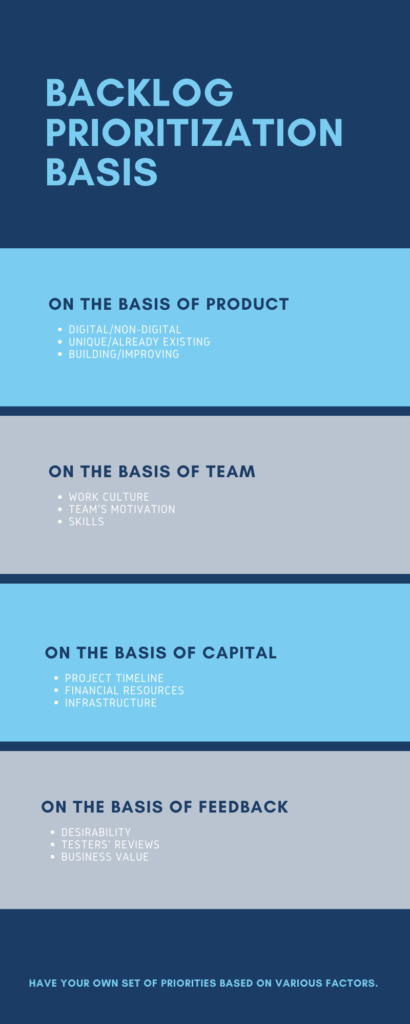
Above are only a few of the many types of classifications that an eLearning course development team can do in order to create a tailored backlog prioritization method.
A general rule of thumb is to use a backlog prioritization tool after you carve out a strategy. Ideally, the tool should be visual, economical, easy to use, and could be integrated into the existing workflow quickly.
Your skills are as good as your tools. If you aim to create a great backlog prioritization methodology for your current team and project, you will need to use tools that are up to the mark. There are a lot of tools that do the job and only a few of them have been doing it well. Below are three of the best backlog prioritization tools that the eLearning course development teams can use for maximum efficiency.
Kanban is a SCRUM tool that helps the collaborators work visually. Kanban boards are a great way to classify tasks based on priority, type while putting them in different department buckets. In one glance it also provides a lot of details about a particular task including, priority, type of task, current status, who is working on it, etc. Because of its visual nature, Kanban boards can be used for Story Mapping, MoSCoW, and Kano Model of backlog prioritization.
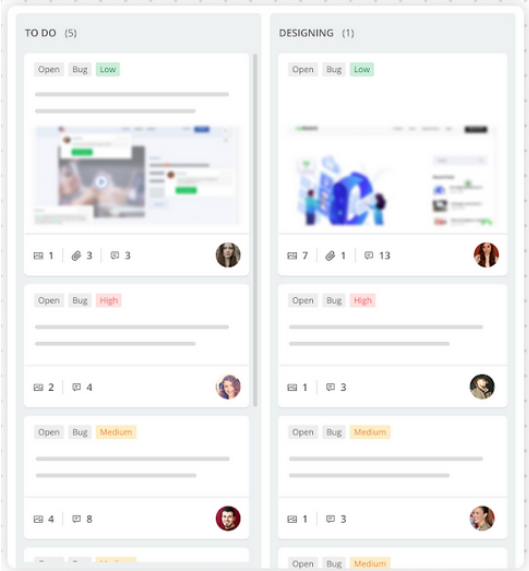
A good task managing tool will help all the collaborators make sure that they are not stepping on each other’s toes. Task managers contain important details including priority, type of task, relevant files, details of the task, who the task is assigned to, deadline, and many more.
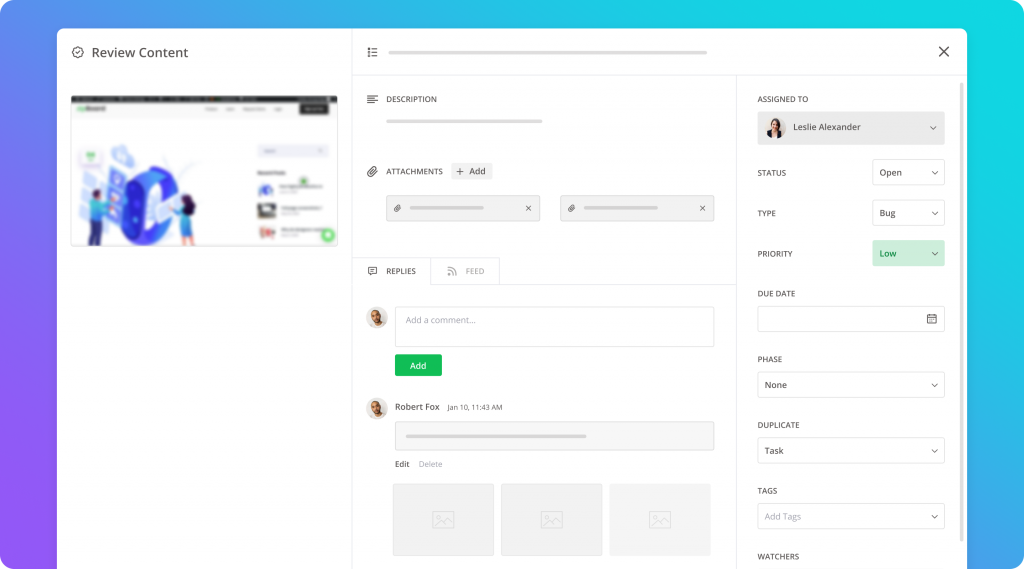
A consolidated list of tasks gives the entire team who is doing what. As a result, there is no confusion in the air about who is doing what.
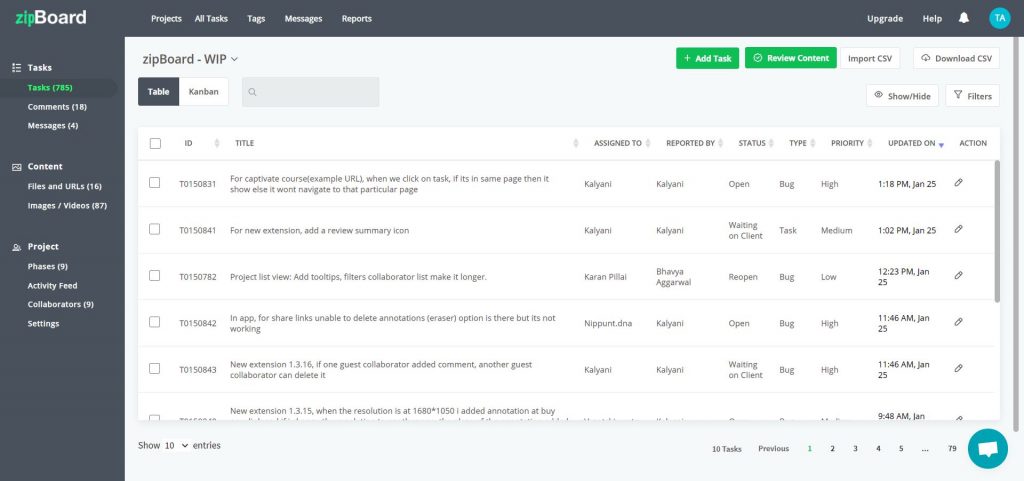
Effective messaging tools keep the communication asynchronous. This helps to keep the email list clear and concise. Moreover, if there is one centralized place where all the collaborators can communicate with each other it will be an overall efficient process.
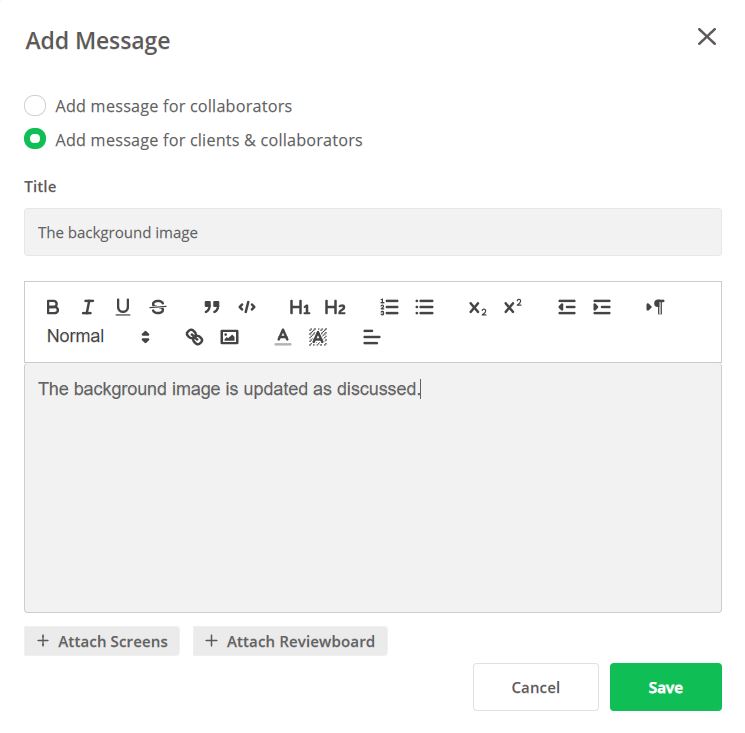
zipBoard has proved itself time and again as a visual review tool, and a visual bug tracking tool. It has been also used as a backlog prioritization tool by many eLearning course development teams. Kanban board, Task manager, and a Messaging tool, zipBoard has it all. Sign up and try zipBoard free for 15 days and take your backlog prioritization to the next level.
Book a personalized demo to learn how zipBoard can help you improve your workflow
©️ Copyright 2025 zipBoard Tech. All rights reserved.